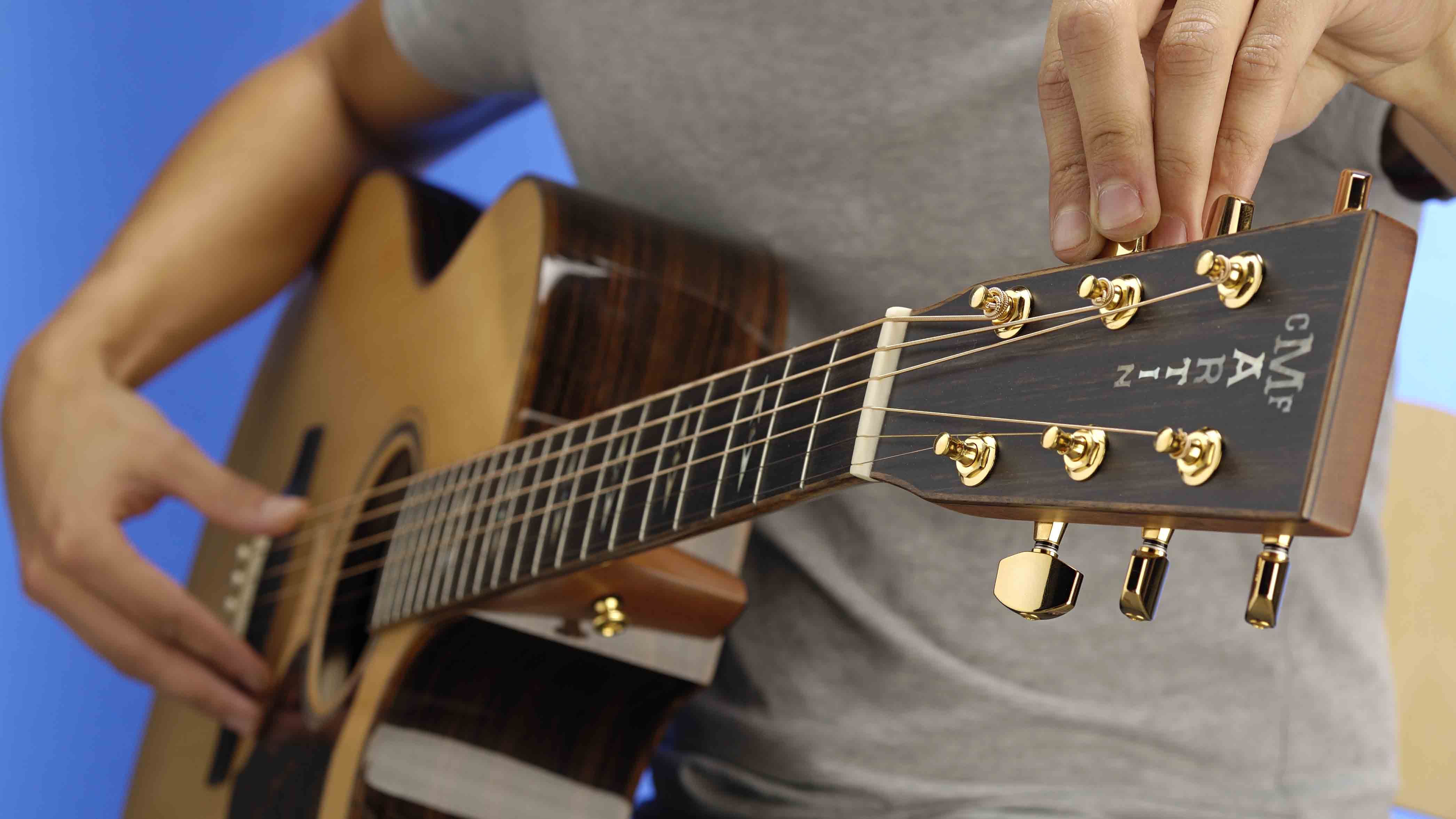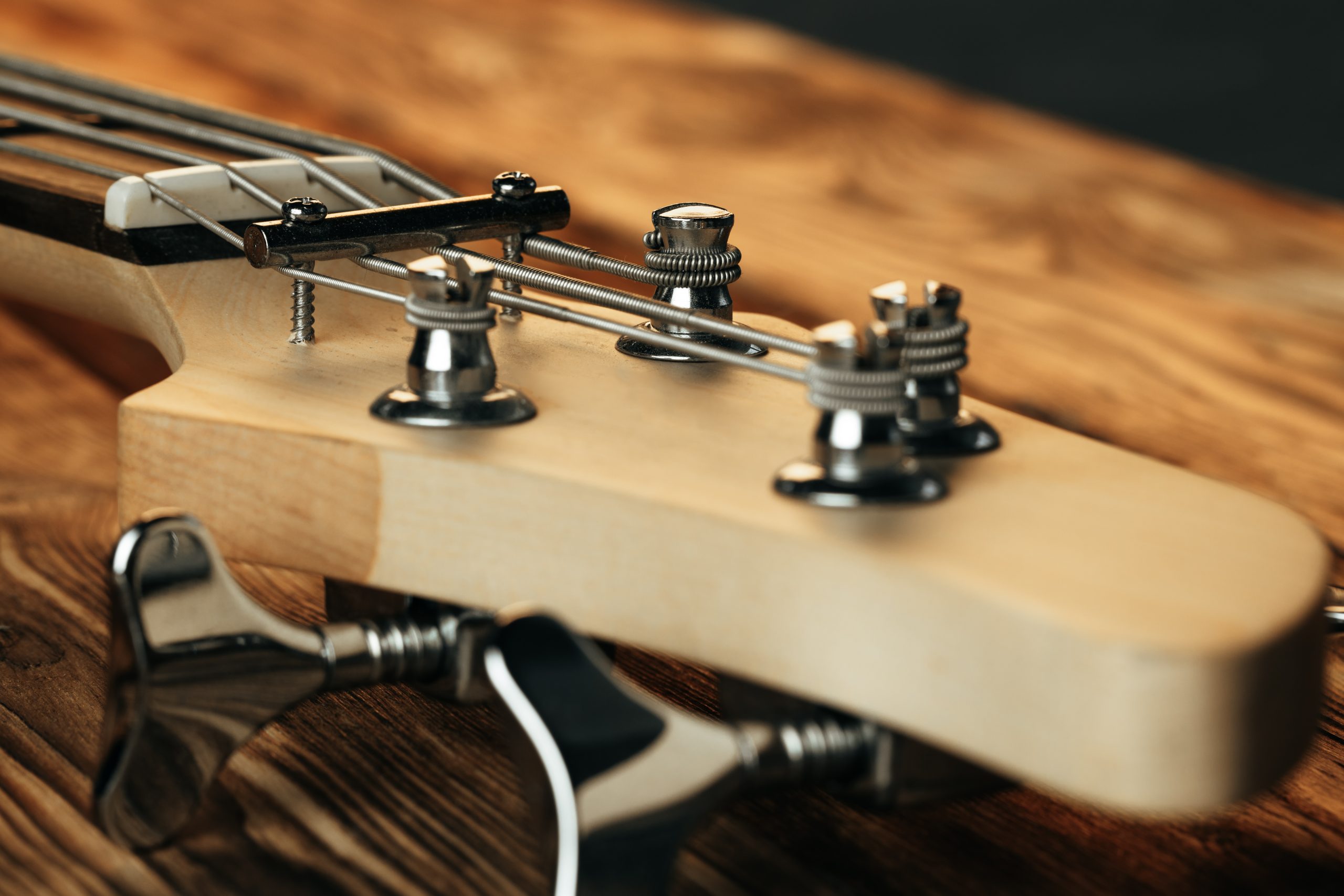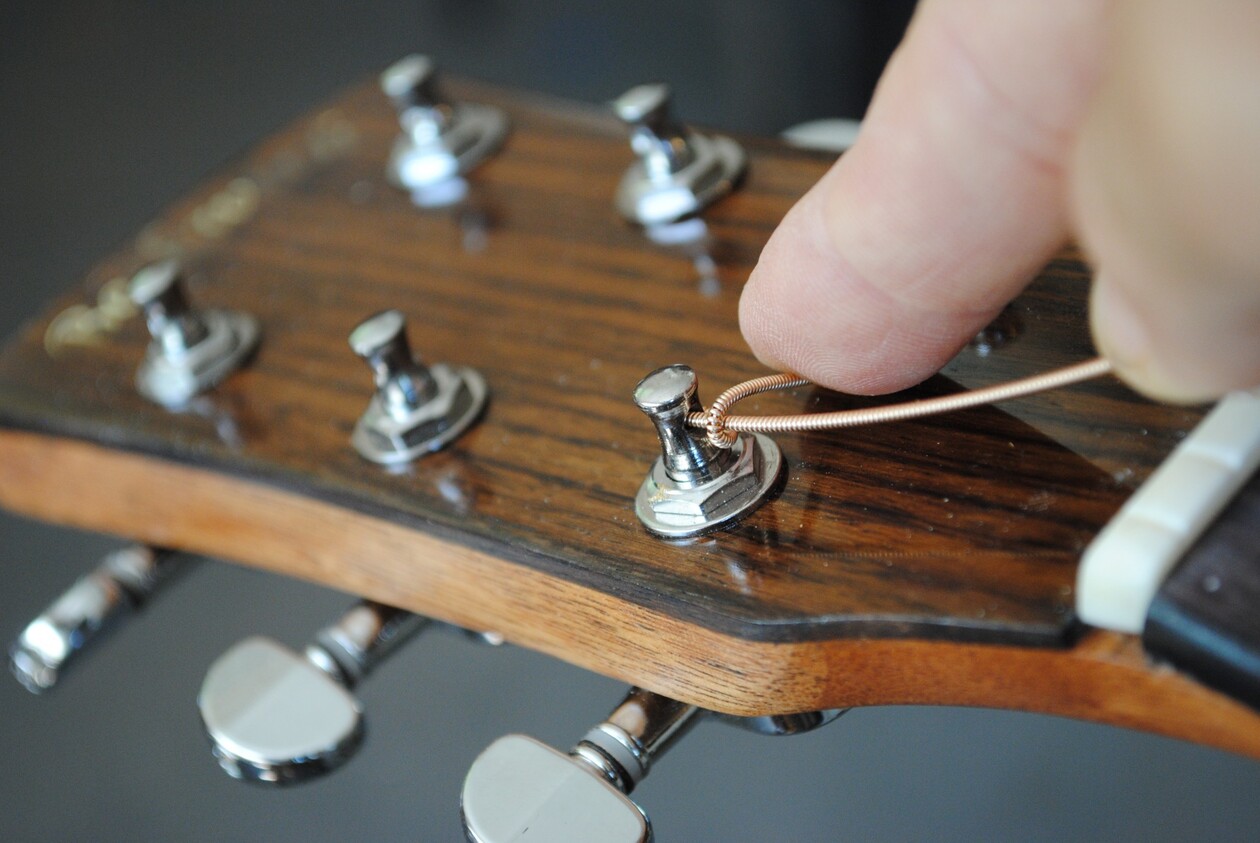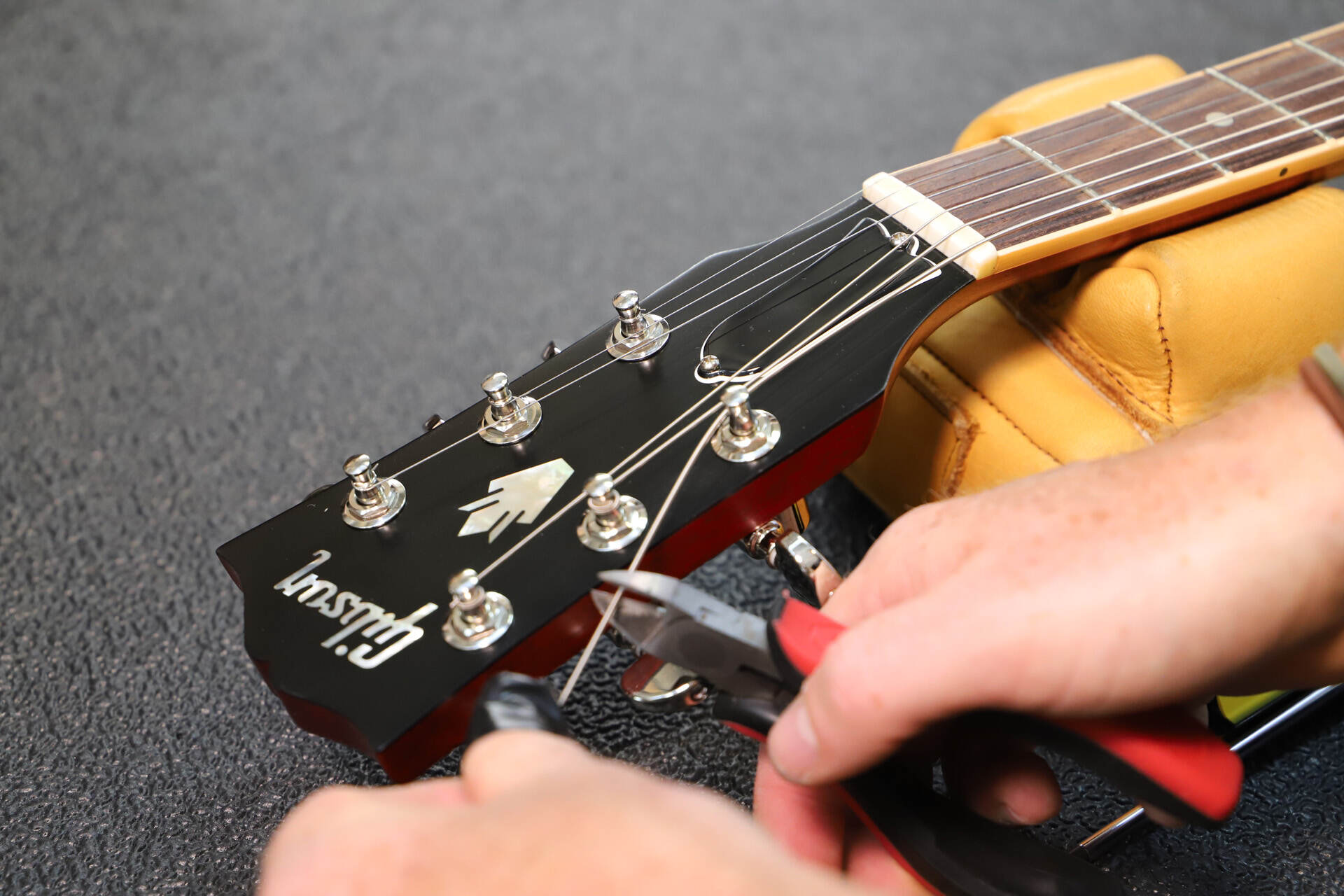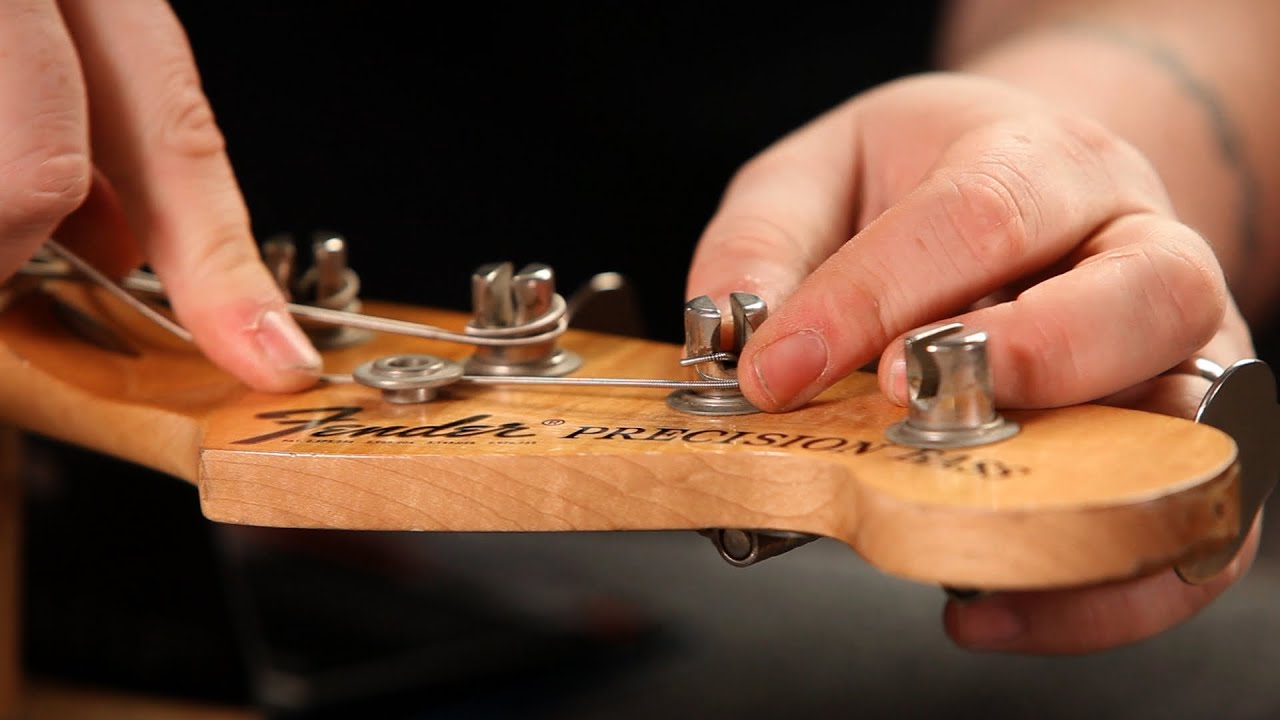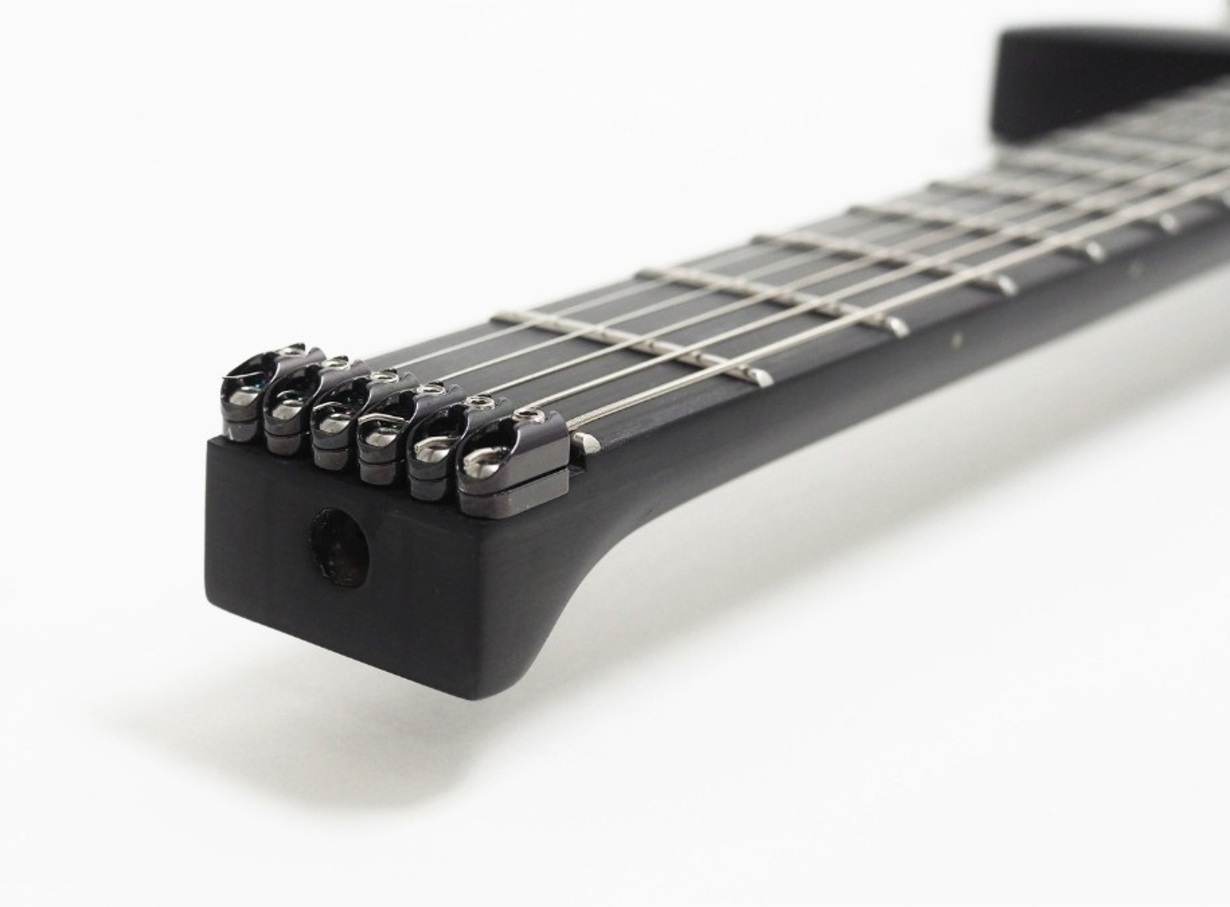Home>Instruments>Guitar>How To Tune A 7-String Guitar


Guitar
How To Tune A 7-String Guitar
Modified: February 15, 2024
Learn how to tune a 7-string guitar with our step-by-step guide. Master the art of tuning and get the best sound out of your guitar today!
(Many of the links in this article redirect to a specific reviewed product. Your purchase of these products through affiliate links helps to generate commission for AudioLover.com, at no extra cost. Learn more)
Table of Contents
Introduction
So, you've decided to take the plunge and explore the world of 7-string guitars. Congratulations! This bold move opens up a realm of sonic possibilities, allowing you to delve into lower registers and experiment with extended range playing. Whether you're a seasoned guitarist looking to expand your sonic palette or a newcomer intrigued by the allure of the 7-string, this comprehensive guide will walk you through the essential steps of tuning and optimizing your instrument for a rich and resonant sound.
Tuning a 7-string guitar may seem daunting at first, especially if you're accustomed to the traditional 6-string setup. However, with the right knowledge and a bit of patience, you'll soon find yourself navigating the additional string with confidence and creativity. In this guide, we'll delve into the intricacies of the 7-string guitar, from understanding its unique characteristics to selecting the appropriate strings and making crucial adjustments to achieve optimal playability and tonal balance.
As we embark on this journey, it's important to approach the process with an open mind and a willingness to embrace new techniques. The 7-string guitar offers a platform for innovation and self-expression, and by mastering its nuances, you'll unlock a world of musical opportunities. So, grab your 7-string guitar, and let's dive into the intricacies of tuning and optimizing this versatile instrument.
Understanding the 7-String Guitar
The 7-string guitar is a powerful tool that expands the guitarist’s sonic range by adding an additional low string below the traditional 6-string setup. This extra string, typically tuned to a low B, opens up a myriad of tonal possibilities, allowing for deeper bass notes and extended chord voicings. By incorporating the 7-string guitar into your repertoire, you gain access to a broader sonic spectrum, enabling you to explore genres such as metal, jazz, and progressive rock with enhanced depth and versatility.
One of the key advantages of the 7-string guitar is its ability to produce rich, resonant tones with added depth and complexity. The low B string, in particular, introduces a new dimension to your playing, empowering you to create thunderous riffs, dynamic bass lines, and intricate chord progressions that resonate with power and authority. Additionally, the extended range of the 7-string guitar lends itself to soloing and improvisation, offering a wider canvas for melodic exploration and expressive phrasing.
When transitioning to a 7-string guitar, it’s important to adapt your playing technique to accommodate the additional string. This includes refining your fret-hand precision to navigate the wider fretboard and developing a nuanced approach to string bending and vibrato. Furthermore, mastering the art of muting unwanted string noise becomes essential, as the expanded range introduces new challenges in controlling string resonance and sustaining clarity in your playing.
By understanding the unique characteristics of the 7-string guitar and embracing its potential for sonic innovation, you’ll embark on a musical journey that transcends conventional boundaries. Whether you’re drawn to the thunderous chugs of heavy metal, the intricate harmonies of jazz fusion, or the progressive textures of experimental rock, the 7-string guitar serves as a versatile ally in your quest for sonic exploration and artistic expression.
Choosing the Right Strings
When it comes to optimizing the playability and tonal characteristics of your 7-string guitar, selecting the right strings is paramount. The extended range and unique tuning of the instrument demand careful consideration to ensure optimal tension, resonance, and tonal balance.
First and foremost, it’s essential to choose strings that are specifically designed for 7-string guitars. These sets are tailored to accommodate the extended range and tension requirements of the instrument, providing a balanced feel across all seven strings. When selecting a string gauge, consider your playing style and tonal preferences. Lighter gauges offer easier playability and facilitate faster fretting, while heavier gauges enhance the low-end resonance and sustain, ideal for genres that demand powerful, articulate bass tones.
Furthermore, the material composition of the strings significantly impacts the overall tonal characteristics of your instrument. Nickel-wound strings deliver a warm and balanced sound, making them suitable for a wide range of musical styles. On the other hand, stainless steel strings offer increased brightness and clarity, ideal for genres that require cutting edge and aggressive articulation. It’s important to experiment with different string materials to find the tonal profile that best complements your playing style and musical preferences.
When exploring the world of 7-string guitar strings, it’s beneficial to seek out renowned manufacturers known for their quality and consistency. Brands such as D’Addario, Ernie Ball, and Elixir have established a strong reputation for producing premium strings that offer exceptional durability, tonal clarity, and intonation stability. By investing in high-quality strings, you’ll ensure a reliable and inspiring playing experience, allowing you to unleash the full sonic potential of your 7-string guitar.
Ultimately, the process of choosing the right strings for your 7-string guitar involves a balance of experimentation and attentive listening. By exploring different string gauges, materials, and brands, you’ll discover the perfect combination that elevates your playing to new heights, unlocking the full tonal spectrum and expressive capabilities of your instrument.
Adjusting the Truss Rod
The truss rod is a crucial component of your 7-string guitar’s neck structure, responsible for maintaining its straightness and providing stability against string tension. Proper truss rod adjustment is essential for achieving optimal playability, intonation, and overall neck health. When transitioning to a 7-string guitar or making significant changes to string gauges, it’s important to assess and, if necessary, adjust the truss rod to accommodate the altered tension and ensure a balanced neck relief.
Before embarking on truss rod adjustments, it’s imperative to understand the instrument’s specific requirements and the potential impact of the additional string on the neck’s curvature. The extended range of a 7-string guitar introduces increased tension, which can affect the neck relief and overall playability. As such, regular assessments of the neck curvature and truss rod tension are essential to maintain optimal performance and prevent issues such as fret buzzing, high action, or uneven fretting.
To adjust the truss rod, begin by loosening the strings to relieve tension on the neck. Using an appropriate truss rod tool, typically a hex key or screwdriver, carefully make incremental adjustments, taking care not to over-tighten or loosen the truss rod excessively. It’s crucial to proceed with caution and patience, as abrupt or forceful adjustments can lead to structural damage and compromise the integrity of the neck.
When adjusting the truss rod, the goal is to achieve a slight but consistent neck relief, ensuring that the strings have adequate clearance without causing fret buzz or intonation issues. By carefully monitoring the neck curvature and making subtle adjustments, you’ll establish a balanced truss rod tension that harmonizes with the extended range and tension requirements of the 7-string guitar.
It’s important to note that truss rod adjustments should be approached with care and precision, especially if you’re unfamiliar with the process. If you’re uncertain about making truss rod adjustments yourself, seeking guidance from a qualified guitar technician or luthier is highly recommended. Professional expertise ensures that the truss rod is adjusted with precision, safeguarding the structural integrity of your instrument and optimizing its playability for the unique demands of a 7-string setup.
Setting the Bridge and Nut
Optimizing the bridge and nut of your 7-string guitar is integral to achieving precise intonation, stable tuning, and comfortable playing experience. As the extended range of the instrument introduces additional string tension and altered string spacing, meticulous adjustments to the bridge and nut are essential for ensuring optimal string action, resonance, and overall performance.
When setting the bridge of a 7-string guitar, attention to intonation and string height is paramount. Begin by assessing the individual saddle positions to ensure that each string’s length is accurately adjusted for proper intonation. The increased scale length and lower tuning of the 7th string necessitate precise saddle positioning to maintain consistent tuning across all strings. Carefully adjust the saddle positions using the appropriate tools, such as a screwdriver or hex key, while regularly checking the intonation using a tuner to verify accurate pitch at various fret positions.
Additionally, optimizing the string height at the bridge is crucial for achieving comfortable playability and preventing fret buzz. The increased tension and string gauge of the 7th string may require slight adjustments to the overall string action, ensuring that the strings are neither excessively high nor too close to the fretboard. By fine-tuning the bridge height, you’ll establish a balanced string action that facilitates effortless fretting and responsive playability across all seven strings.
Similarly, attention to the nut of your 7-string guitar is essential for maintaining stable tuning and mitigating string binding or excessive friction. The nut slots should be carefully inspected and, if necessary, filed to accommodate the wider string spacing and gauge of the 7-string setup. Properly lubricating the nut slots with graphite or specialized lubricants can further enhance tuning stability and prevent string sticking, particularly crucial for the low-tuned 7th string.
When setting the bridge and nut of a 7-string guitar, patience and precision are key. Regular assessments of string height, intonation, and tuning stability, coupled with meticulous adjustments, will ensure that your instrument delivers optimal performance and responsiveness across its extended range. If you’re uncertain about making these adjustments yourself, consulting a skilled guitar technician or luthier can provide invaluable expertise in fine-tuning the bridge and nut for the unique demands of a 7-string guitar.
Tuning the Guitar
Tuning a 7-string guitar requires a nuanced approach to ensure precise pitch accuracy and stable intonation across its extended range. With the addition of a low B string, the tuning process becomes an essential step in optimizing the instrument’s tonal balance and playability. Whether you’re exploring standard 7-string tuning or experimenting with alternative tunings, meticulous attention to each string’s pitch and tension is crucial for achieving optimal sonic potential.
Standard 7-string tuning typically involves the following pitches from low to high: B, E, A, D, G, B, E. When tuning your 7-string guitar, it’s essential to utilize a reliable tuner to accurately set the pitch of each string. Begin by securing the low B string at the appropriate tension, ensuring that it resonates with a clear and defined tone. Proceed to tune the remaining six strings in standard EADGBE tuning, paying close attention to the transition from the 6th to the 7th string to maintain consistent string tension and tonal balance.
For players venturing into alternative tunings on a 7-string guitar, such as drop tunings or open chord configurations, careful consideration of string tension and intonation is paramount. Adjusting the tuning to accommodate lower registers or unconventional chord voicings requires meticulous fine-tuning of each string’s pitch, often necessitating subtle adjustments to the bridge and truss rod to maintain stable playability and tonal clarity.
Given the extended range and diverse tonal possibilities of a 7-string guitar, it’s beneficial to explore various tunings to unlock new sonic textures and creative expressions. Whether delving into the depths of drop-tuned metal riffing or embracing the harmonic richness of open tunings, the 7-string guitar serves as a versatile canvas for sonic exploration and musical innovation.
Regular maintenance of the instrument’s tuning stability is essential for preserving optimal playability and tonal integrity. Factors such as string age, environmental conditions, and playing frequency can impact the guitar’s tuning stability, necessitating periodic adjustments to maintain pitch accuracy and string tension. By staying attuned to the instrument’s tuning and making necessary adjustments as needed, you’ll ensure a consistent and reliable playing experience across the diverse tonal landscape of the 7-string guitar.
Tips for Playing a 7-String Guitar
Embracing the sonic potential of a 7-string guitar opens up a world of creative possibilities and sonic exploration. Whether you’re a seasoned guitarist transitioning to the extended range or a newcomer eager to harness the instrument’s versatility, the following tips will guide you in navigating the unique characteristics of the 7-string guitar and unlocking its full expressive potential.
- Explore Extended Chord Voicings: The additional low B string on a 7-string guitar provides an opportunity to experiment with extended chord voicings, enriching your harmonic palette and enabling the creation of lush, resonant chords with added depth and complexity.
- Refine String Muting Techniques: Given the expanded range of the 7-string guitar, mastering string muting techniques becomes essential to control unwanted string noise and maintain clarity, particularly when navigating lower registers and executing percussive playing styles.
- Develop Fret-Hand Precision: Adapting to the wider fretboard of a 7-string guitar requires honing fret-hand precision and dexterity, allowing you to navigate the extended range with accuracy and fluidity while executing intricate melodic passages and chord transitions.
- Experiment with Diverse Genres: The 7-string guitar’s extended range lends itself to diverse musical genres, from metal and progressive rock to jazz and fusion. Embrace the opportunity to explore new sonic territories and adapt your playing style to suit the expressive demands of different musical genres.
- Balance String Tension and Action: Fine-tune the string tension and action of your 7-string guitar to achieve a balanced and comfortable playing experience, ensuring that the instrument’s setup complements your playing style and facilitates effortless fretting and string bending.
- Utilize the Low B String Creatively: The low B string offers a powerful foundation for crafting thunderous riffs, dynamic bass lines, and emotive melodies. Experiment with creative applications of the low B string to infuse your playing with depth and resonance.
- Adapt Playing Techniques to Lower Registers: Navigating the lower registers of a 7-string guitar requires adapting playing techniques to maintain clarity and articulation. Refine your picking and fretting approach to harness the expressive potential of the extended low end.
- Embrace Sonic Innovation: The 7-string guitar invites sonic innovation and experimentation. Embrace the instrument’s extended range as a catalyst for pushing musical boundaries, crafting unique tones, and expressing your artistic vision with newfound depth and versatility.
By incorporating these tips into your playing approach, you’ll embark on a fulfilling journey of musical discovery and artistic expression, harnessing the full potential of the 7-string guitar to create captivating compositions and explore new sonic frontiers.


